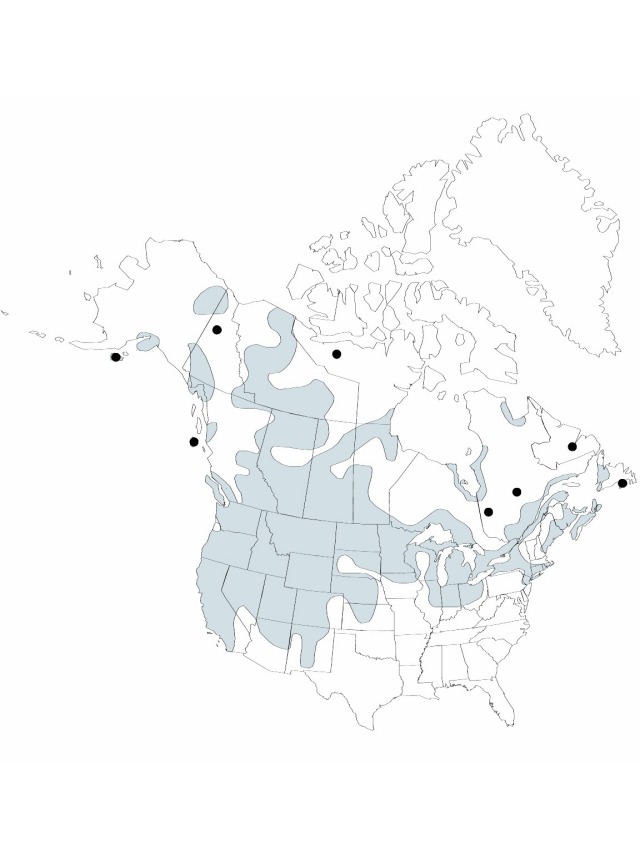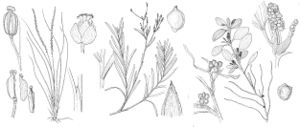Triglochin maritima
Sp. Pl. 1: 339. 1753 (as maritimum).
Plants with fibrous strands of old leaves at base, 3.5–61.5 cm. Leaves erect from sheath, mostly shorter than scape, 2.2–11.5 cm; sheath 0.7–2.5 cm × 1–1.8 mm, ligule occasionally hoodlike, apically 2-lobed; blade 0.9–1.4 mm wide, apex obtuse to round. Inflorescences: scape often purple near base, mostly exceeding leaves, 1–16.5 cm × 0.5–1 mm; racemes 6–45 cm × 1.5–7 mm; pedicel 1–4 × 0.2–0.3 mm. Flowers: tepals elliptic, 1.3–1.7 × 0.6–1.4 mm, apex acute; pistils 6, all fertile. Fruits: fruiting receptacle without wings; schizocarps linear to near globose, 2–4.5 × 1.5–2 mm; mericarps linear to linear-obovate, weakly ridged, 1.5–3.5 × 0.7–1 mm, beak erect to recurved, 0.2 mm. 2n = 12, 24, 36, 48, 120.
Phenology: Flowering summer–fall.
Habitat: Coastal and mountain marsh areas and moist alkaline meadows
Elevation: 0–4000 m
Distribution

Alta., B.C., Man., N.B., Nfld. and Labr., N.W.T., N.S., Nunavut, Ont., P.E.I., Que., Sask., Yukon, Alaska, Ariz., Calif., Colo., Conn., Idaho, Ill., Ind., Iowa, Kans., Maine, Mass., Mich., Minn., Mont., Nebr., Nev., N.H., N.J., N.Mex., N.Y., N.Dak., Ohio, Okla., Oreg., Pa., R.I., S.Dak., Utah, Vt., Wash., Wis., Wyo., Mexico, South America, n Europe, n Asia.
Discussion
This taxon has been separated into Triglochin concinna and T. maritima based upon the lobing of the ligule and the smaller size of the plants of the former (e.g., J. L. Reveal 1977; R. F. Thorne 1993). On a local basis such a separation seems warranted. Examination of the T. maritima complex throughout the Americas, however, reveals continuous variation from small, widely spaced plants with 2-lobed ligules to large, tufted plants with unlobed ligules, including plants with all combinations of those characters.
Triglochin maritima is important in livestock management because it is quite toxic: it is a cyanide producer.
